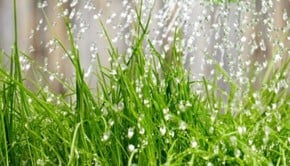Lawn Mower Quality of Cuts Problems and Solutions
You have a riding mower or tractor and it’s been reasonably well cared for. It runs great but the lawn just doesn’t look right after its cut. The mower is leaving streaks, stingers or step cutting. Maybe your rider is scalping? Could it be the deck or just some maintenance item you have missed?
Safety
First, let’s caution everyone that outdoor power equipment is inherently dangerous. Some precautions need to be observed:
- Turn the unit off and remove the key.
- Disconnect the spark plug(s).
- Wear heavy leather gloves when working around the cutting blades.
- Never defeat the interlocks installed by the manufacture.
- Do not leave guards or deflectors off when you are done.
- Most important, read your owner’s manual.
Basic Troubleshooting
The next things you should check are the basics. When did the problem start? Did you just install new blades? Don’t laugh, are they on upside down? We often see mowers come to our shop for cutting problems that are as simple as low air pressure in the tires. If the tire pressure is not as recommended per the manufacture, the deck could easily be off by a 1/4″ from side to side.
Step Cutting
Step cutting is sharp ridges left in the lawn surface. Step cutting is usually caused by mower deck damage, improper adjustment, or mower blade damage. Normally the deck just needs to be re-leveled. To check for this:
- Park the unit on a flat surface.
- Manually turn the blades perpendicular with the direction the tractor is sitting.
- Measure the outer tip of the left blade to the surface your parked on (don’t measure from the deck shell, it has to be from the blade tip).
- Write the measurement down.
- Go to the right side of the tractor and measure from the tip of the right blade to the surface.
The two measurements should be the same. If the measurements are a 1/4″ or more off, it needs to be corrected. The next thing to do is to turn the blades and measure again. If the measurements are not the same, one of the blades is probably bent. Other things to check for are damage to the deck shell, and bent or loose spindles.
Streaking
Streaking is another common complaint. Streaking is when thin strips of uncut grass are left behind the mower. Streaking is usually caused by operator error or poor blade maintenance. Streaking can occur if the engine speed is too low. All mowers are designed to run at full throttle. Believe it or not you are doing more harm to your engine by running it slower than full throttle when you are mowing. Blades need to be spinning at the correct blade tip speed. They need to be sharp and not have too much wear on the uplifts. The speed and uplifts pull the grass up just like the barber lifts your hair up with a comb to get a straight cut. The air movement within the cutting deck is very important. Decks plugged with grass clippings cannot move the air the way they were designed to do.
Design of the Tractor & Deck
Another cause of both streaking and step cutting is the design of the tractor and the deck itself. If the operator does not overlap the cutting row enough or makes very tight turns, marks can be left in the lawn. The easy way to see the cause of this is to use a jack to raise one rear wheel of the tractor a little off the ground. If your tractor does not have a full free floating deck doing this will cause the deck to tilt. This tilting in tight turns and when one wheel is lifted higher than the other by uneven ground contours will leave marks. The only fix for this is to slow down, make wide turns, over-lap cuts, or buy another tractor with a free floating deck.
Scalping
Scalping is when the mower deck comes close to or hits the ground. Scalping can be caused by mower deck misalignment, unevenness in the lawn, or by the mower deck bouncing because the ground speed is too fast.
Check the mower deck for misalignment, slow down or raise the deck if it’s too low to prevent scalping.
Conclusion:
These tips and guidelines should help you fix common mowing problems to keep your lawn looking the way you want it. Remember though, these are just guidelines. For specific information for the power equipment you are using always refer to your owner’s manual.
Featured Parts and Products







55 Responses to Lawn Mower Quality of Cuts Problems and Solutions